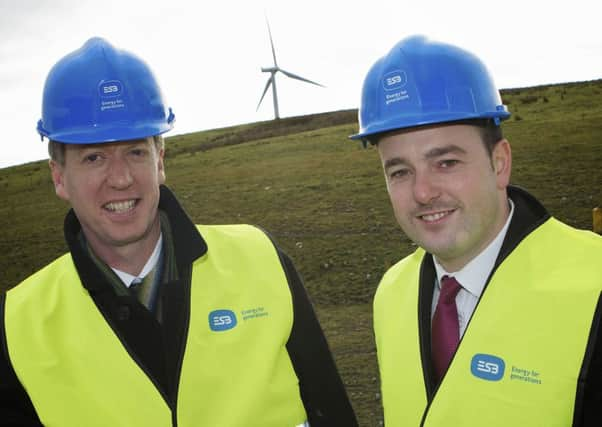Coolkeeragh value written down as energy bosses warn over long-term security of supply


Paddy Hayes warned MPs that the rapidly changing energy and electricity sector is a major challenge for companies and countries attempting to secure power supply over the next ten to twenty years.
The ESB electricity generation executive delivered the frank assessment alongside Carla Tully of competitor, AES UK and Ireland, at a recent briefing of the Northern Ireland Affairs Committee, which is currently conducting an inquiry into the electricity sector in Northern Ireland.
Advertisement
Hide AdAdvertisement
Hide AdDuring the briefing Mr Hayes stated: “There is currently a challenge into the long term around generator profitability and viability.
“For example, for our business in Coolkeeragh, when we looked at our accounts at the end of last year we took a write-down on our business as we looked forward at the revenue streams coming into the business.
“We took a write-down in our accounts. There is a challenge for long-term profitability for the existing generation.”
Earlier, he pointed out how ESB has invested significantly in the Northern Ireland electricity sector over the past twenty years, initially at Coolkeeragh, and latterly at four wind farms, with two more planned to come online in the near future, including at Eglish between Claudy and Donemana.
Advertisement
Hide AdAdvertisement
Hide Ad“In Northern Ireland, overall ESB employs just over 1,000 people. Regarding the generation business in Northern Ireland, we started in about the late 1990s, developing a combined cycle gas turbine plant at Coolkeeragh, which came into operation in 2005. That has a capacity of about 450 megawatts.
“Since then we have invested in four wind farms, with a total capacity of 75 megawatts, in Northern Ireland. We are investing in two more that are under construction,” he told the Committee.
Mr Hayes explained how the Coolkeeragh plant and the various ESB wind farms provide considerable local employment, directly and through subcontractors.
“Our generation business employs between 50 and 60 people. We have 39 full-time employees in Coolkeeragh, and obviously quite a lot of supporting business.
Advertisement
Hide AdAdvertisement
Hide Ad“We reckon around £14 million a year goes into the provision of services from the surrounding areas of Coolkeeragh.
“Then we have about 10 to 15 people working on wind farms, and then in construction we would have varying amounts at different times. Regarding full-time employees, however, we have about 50 or 60.”
But both Ms Tully and Mr Hayes expressed concern about security-of-supply in the decades ahead, especially if the north-south interconnector doesn’t come online soon.
Mr Hayes, whilst optimistic that the cross-border infrastructure will go ahead, said: “Without looking exactly at the numbers, it seems to me that in about the winter of 2021, absent the north-south interconnector and absent anything else, there is a challenge. What would happen then if the north-south interconnector was not going to happen by 2021?
Advertisement
Hide AdAdvertisement
Hide Ad“Maybe two years in advance of that it would be important to commission some emergency generation or some alternatives - to bring some generation out of retirement, if that was possible, or commission emergency generation that could be brought in within the space of a year or 18 months, subject to planning.
“This has been done in various jurisdictions and various times. That would be necessary to support the system until the north-south interconnector was up and running.
“If the north-south interconnector looked like it was going to be even further away, that might require a more extensive remedy. But it would seem to me that the winter of 2021 is the target, and scrolling back from that, the time to be enacting some emergency measures would be a couple of years ahead of that.”